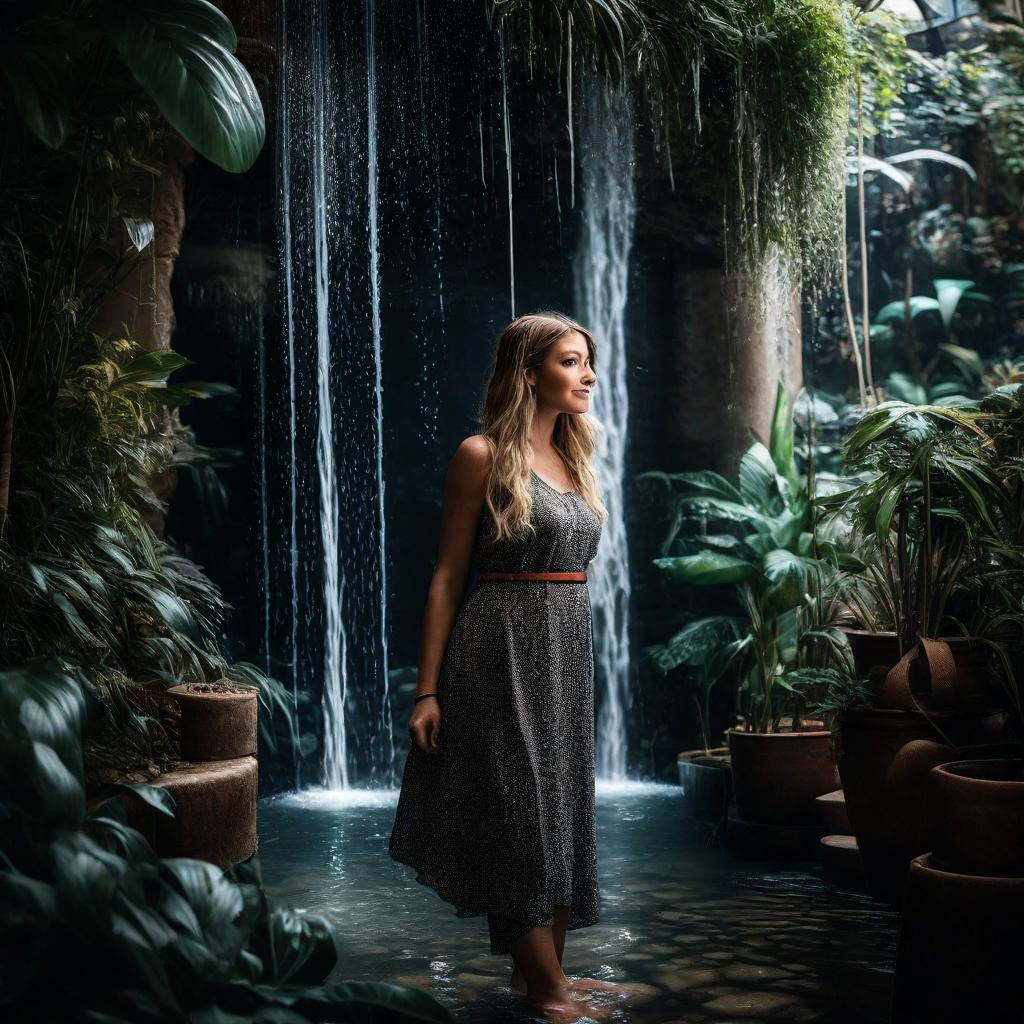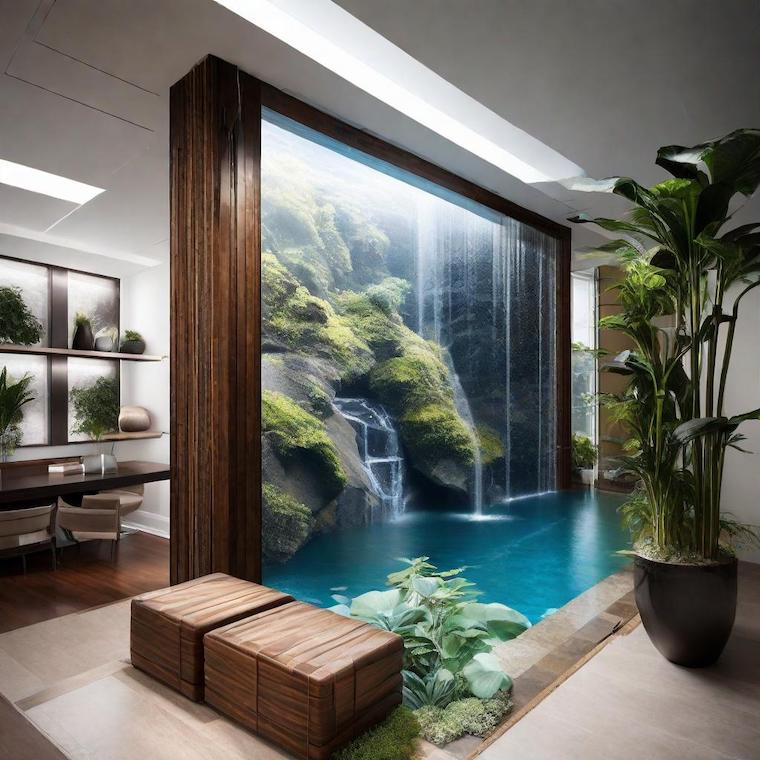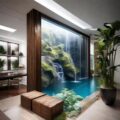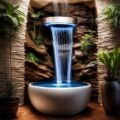In recent years, the trend of indoor waterfall walls has surged, transforming ordinary spaces into havens of tranquility and visual splendor. This architectural marvel not only brings a touch of nature indoors but also captivates with its cascading water and soothing ambiance. As the trend gains momentum, homeowners and businesses alike are increasingly integrating these enchanting features into their interiors, creating a sense of luxury and sophistication. In this article, we will share maintenance tips for indoor waterfall walls.
While the aesthetic appeal of indoor waterfall walls is undeniable, ensuring their longevity and optimal performance requires a commitment to regular maintenance. Like any captivating piece of art, these installations demand care and attention to preserve their beauty and functionality over time. Neglecting maintenance not only jeopardizes the visual impact of the waterfall walls but can also lead to operational issues, compromising the overall experience.
This article aims to shed light on the essential aspect of regular maintenance tips2 for indoor waterfall walls. We will explore the various components that make up these mesmerizing features and delve into actionable tips to keep them in pristine condition.
From cleaning routines to water quality management, we’ll guide you through the intricacies of caring for your indoor waterfall wall. By following these maintenance tips for indoor waterfall walls, you not only safeguard the aesthetics but also ensure the continued functionality of your indoor oasis, allowing you to relish the benefits of this captivating addition for years to come.
Regular Cleaning Routine
A pristine waterfall surface not only enhances the visual appeal of your indoor oasis but also plays a crucial role in maintaining the overall health of the system. Regular cleaning is essential to prevent the accumulation of algae, mineral deposits, and debris, ensuring that your indoor waterfall wall continues to captivate with its crystal-clear flow. Follow this step-by-step guide for an effective and hassle-free cleaning routine:
- Inspect the Waterfall Surface:
- Begin by turning off the waterfall system to ensure safety during the cleaning process.
- Carefully inspect the entire waterfall surface for any visible debris, algae, or mineral deposits.
- Remove Debris and Loose Particles:
- Gently brush or sweep away any leaves, dust, or loose particles on the surface using a soft-bristled brush or a specialized waterfall surface cleaner.
- Pay extra attention to corners and crevices where debris may accumulate.
- Prepare a Cleaning Solution:
- Mix a mild cleaning solution using a mixture of water and a gentle, non-abrasive cleanser.
- Avoid using harsh chemicals that may damage the surface or harm aquatic life within the system.
- Apply the Cleaning Solution:
- Using a soft sponge or cloth, apply the cleaning solution evenly across the entire waterfall surface. Ensure thorough coverage, especially in areas prone to algae growth or mineral deposits.
- Scrub and Clean:
- Gently scrub the surface with a sponge or a soft brush to dislodge any stubborn algae or deposits.
- Take care not to scratch or damage the material of the waterfall wall.
- Rinse Thoroughly:
- Rinse the entire surface with clean water to remove the cleaning solution and dislodged debris.
- Use a hose or a bucket of water for the rinsing process, ensuring that no cleaning residues are left behind.
- Repeat as Necessary:
- Depending on the environmental conditions and the frequency of use, repeat the cleaning process regularly to prevent the buildup of contaminants.
- Aim for a cleaning schedule that aligns with the unique needs of your indoor waterfall wall.
Recommended Cleaning Agents and Tools:
- Mild dish soap or specialized waterfall surface cleaner: Gentle yet effective in removing algae and debris.
- Soft-bristled brush or sponge: Ideal for scrubbing without causing damage to the surface.
- Clean water: For rinsing and ensuring no cleaning residues remain.
Frequency of Cleaning:
- Perform a thorough cleaning at least once a month to prevent algae growth and mineral deposits.
- Adjust the frequency based on environmental factors, such as the presence of indoor plants or the proximity to natural light sources.
Water Quality Management
Maintaining pristine water quality is important to the longevity and vitality of your indoor waterfall wall. Water, the lifeblood of this captivating feature, not only contributes to its visual allure but also plays a pivotal role in sustaining a healthy environment. In this section, we will explore the significance of water quality management and provide actionable tips to ensure the optimal conditions for your indoor oasis.
Importance of Maintaining Proper Water Quality:
The water in your indoor waterfall wall is more than a mere aesthetic element, it serves as a dynamic ecosystem that requires careful attention. Proper water quality management is crucial for several reasons:
- Preventing Algae Growth: Well-maintained water quality inhibits the proliferation of algae, keeping the waterfall surface clear and pristine.
- Protecting Pump and Filtration Systems: Clean water reduces the likelihood of clogs and damage to the pump and filtration components, ensuring seamless functionality.
- Preserving Aesthetic Appeal: Crystal-clear water enhances the visual impact of the waterfall, allowing you to fully appreciate its beauty.
Tips for Testing and Adjusting pH Levels:
- Invest in a pH Testing Kit:
- Obtain a reliable pH testing kit designed for water features.
- These kits are readily available and offer a quick and accurate assessment of your water’s acidity.
- Ideal pH Range:
- Aim for a pH level between 7.2 and 7.8, slightly alkaline, to create a conducive environment for both the waterfall structure and any aquatic life within the system.
- Regular Testing Schedule:
- Establish a routine for testing pH levels, especially after significant water changes or adjustments. This helps you catch and address imbalances promptly.
- Adjusting pH Levels:
- Use pH-adjusting products, available at most pool and water feature supply stores, to bring the water within the desired pH range. Follow product instructions carefully for accurate adjustments.
Suggestions for Using Water Conditioners to Prevent Bacterial Growth:
- Choose a Suitable Water Conditioner:
- Select a water conditioner designed for indoor water features, ensuring it addresses potential bacterial issues without harming the waterfall components.
- Follow Recommended Dosages:
- Adhere to the recommended dosage guidelines provided by the water conditioner manufacturer.
- Overuse may be counterproductive and affect water quality.
- Regular Application:
- Integrate the use of water conditioners into your routine maintenance schedule, applying them as directed to prevent bacterial growth and maintain water clarity.
Frequently Asked Questions
It is recommended to perform a thorough cleaning at least once a month, but the frequency may vary based on factors such as environmental conditions and usage.
It is advisable to use mild dish soap or specialized waterfall surface cleaners. Avoid harsh chemicals that can damage the surface or harm aquatic life within the system.
Use a soft-bristled brush or sponge for scrubbing, ensuring it is gentle enough not to cause damage. Additionally, a hose or a bucket of clean water is needed for rinsing.
Proper water quality management prevents issues like algae growth, protects pump and filtration systems, and enhances the overall visual appeal of the waterfall.
Regularly inspect the waterfall system for leaks. Minor leaks can often be sealed using DIY methods, but it’s advisable to consult a professional for more significant issues.
Yes, maintaining proper ventilation and humidity levels is crucial to prevent mold and mildew growth. Consider using dehumidifiers if needed to control humidity and protect the surrounding environment.

With a deep appreciation for the soothing allure of indoor water features, i share expertise in crafting, maintaining, and personalizing waterfalls for homes and spaces. Join the journey to transform spaces into serene havens.






Leave a Reply